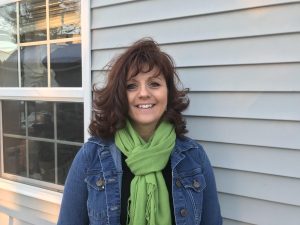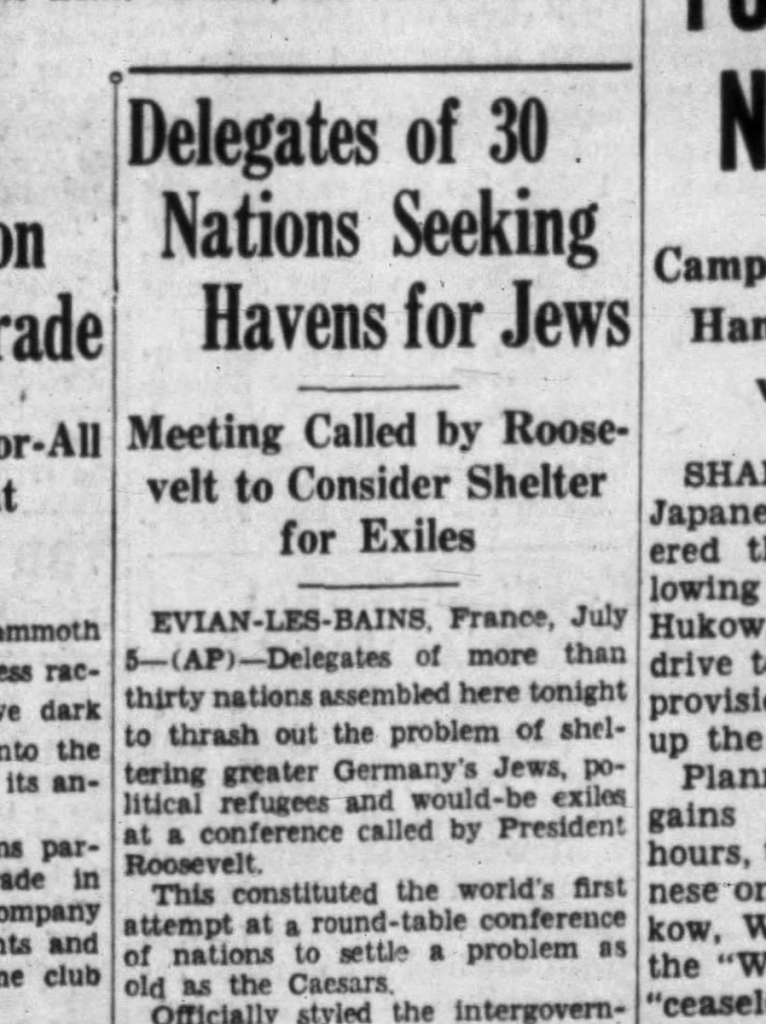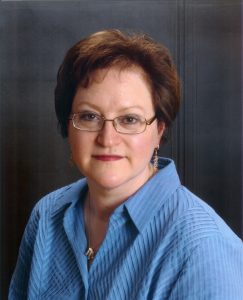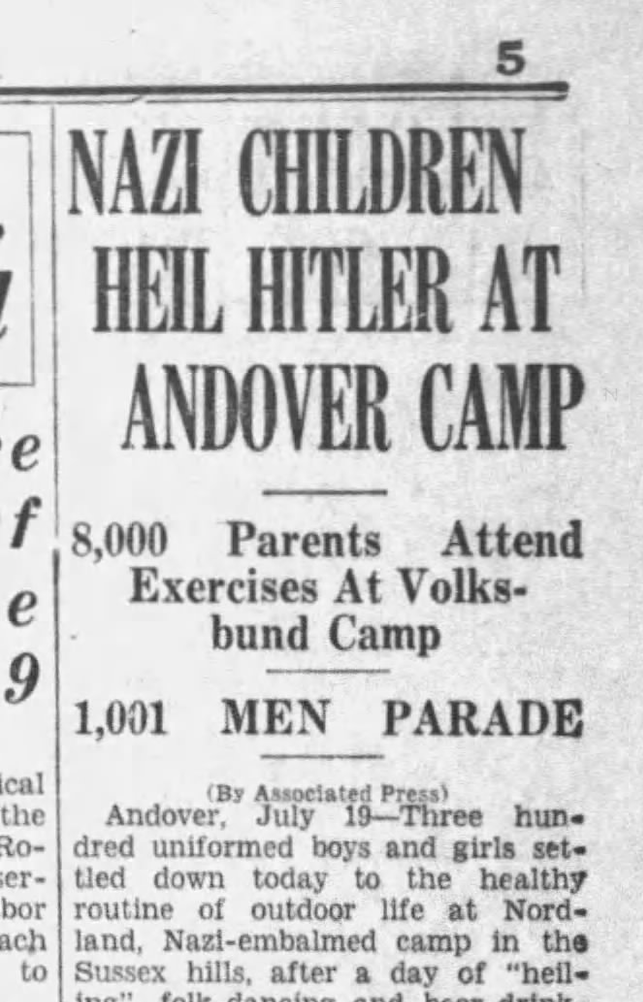Two Educators within the Gratz College Community Use History Unfolded
History Unfolded by Two Educators within the Gratz College Community
Maine high school social studies teacher Heidi Omlor received her PhD in Holocaust & Genocide Studies (HGS) from Gratz College, Melrose Park, PA. New Jersey colleague and adjunct professor Barbara Krasner is a PhD candidate in the HGS program at Gratz. Separately, they each leaned into History Unfolded to meet professional and personal goals.
History Unfolded in Maine
Heidi Omlor, PhD, teaches high school social studies at Ellsworth High School as well as Humanities at Maine Maritime Academy. Dr. Omlor has used the History Unfolded program with her high school students as well as to help guide her research for her recent dissertation, “The Holocaust: Front Page News in Maine.” Here is Dr. Omlor:

I first learned of History Unfolded in the Spring of 2017 in an email I received from USHMM. I investigated the program and then decided it would be an excellent way to finish my unit on WWII; by having my students see for themselves the news of the war and the Holocaust on the front pages of Maine’s newspapers. I divided the events provided by the History Unfolded program among the students and was delighted to discover that not only did Maine’s newspapers cover many of the events; the information was on the front pages, instead of buried in the body of the newspaper like we expected.
Although I continue to use History Unfolded with my high school students, I have used it most recently for my research with my dissertation. By using the events as a guide for which dates to take a closer look at, I was able to focus my time and attention on specific events without having to read the front page of every newspaper from 1933 to 1945.
Although there were dozens of events that were on the front page of Maine’s newspapers that informed readers about the plight of European Jews, there were a few that received more coverage than others: the April 1, 1933 Nazi Boycott of Jewish Businesses, the Evian Conference in July 1938, and Kristallnacht on November 9-10, 1938; the source for all of these articles was the Associated Press (AP). I also discovered that Maine’s newspaper editors wrote regularly about what was on the front pages, openly criticizing Nazi Germany and the lack of a solid response to the plight of European Jews on the part of the United States.
Nazi Boycott of Jewish Businesses
In Maine, coverage of the boycott began in late March, 1933. For instance, we found a March 29, 1933 article “Nazis Plan Boycott Against All Jews,” on the front page of The Lewiston Daily Sun. Coverage of the boycott would continue for the next few days with several articles that chronicled the boycott and its effects.
Evian Conference
Coverage of the Evian Conference began on the front page of The Bangor Daily News on July 6, 1938 with the article, “Delegates of 30 Nations Seeking Havens for Jews.” Additional coverage of Evian would appear ten days later on the front page of The Lewiston Daily Sun and would continue to appear off and on until the end of 1938.

"Delegates of 30 Nations Seeking Havens for Jews". The Bangor Daily News. July 6, 1939.
Kristallnacht
Maine’s newspapers covered the events of Kristallnacht, as did most U.S. newspapers on their front pages. Maine’s newspapers continued to cover the pogrom, its aftermath, and reactions from US government officials and religious groups in the US for several weeks after the events of November 9-10, 1938.
History Unfolded at The College of New Jersey
Barbara Krasner, adjunct professor of history, teaches in the Holocaust & Genocide Studies program at The College of New Jersey. In Fall 2021, her “America and the Holocaust” undergraduate students used History Unfolded to respond to the final project assignment prompt, “What Did New Jersey Know about…”
Here’s Professor Krasner:

I first learned of the History Unfolded project as a fellow at the Curt C. and Else Silberman Seminar for Faculty at the US Holocaust Memorial Museum in 2019. Eric Schmalz came into our classroom to introduce us to the benefits of the project. By Fall 2021, I had taught “America and the Holocaust” at The College of New Jersey twice before, dissatisfied by the availability of local resources, especially during the pandemic. I modified the final assignment for this third iteration to take advantage of History Unfolded resources, chief among them the three free weeks of newspapers.com access.
Finding Events and New Jersey’s Nazi Paramilitary Camp, Camp Nordland
In New Jersey, we had a unique event that was not part of the dropdown list of History Unfolded: the German-American Bund camp, Camp Nordland, that opened in Andover, New Jersey in July 1937. The History Unfolded team created a “Miscellaneous” event category that students could now choose. Three students chose to investigate Camp Nordland. While the majority of newspaper clippings came from daily papers in the state’s city centers such as Paterson in northern New Jersey, New Brunswick in the central part of the state, and Camden in the south, the Associated Press (AP) provided most of the bylines. These bylines prevailed even though the camp was local. At least in The (Paterson) Morning Call, news coverage appeared between pages 1 and 3.

"Nazi Children Heil Hitler at Andover Camp." Bergen Evening Record. July 19, 1937.
Kristallnacht
Kristallnacht also made front page news in The (Paterson) Morning Call, the Paterson Evening News, and The (Camden) Morning Post. Paterson and its silk mills had attracted a large Jewish immigrant population, especially from Lodz, Poland, in the late eighteenth and early nineteenth centuries.
Calling Attention to Auschwitz as a Death Camp
Other major findings included that New Jersey was certainly aware of refugee issues but buried them in newspaper back pages and took no action. And perhaps most surprisingly, Auschwitz as a death camp was identified by name through the AP in December 1944 in the Plainfield Courier News (central New Jersey), but without explanation or context as if it were commonly understood why 600,000 Hungarian Jews were deported there. The Courier News continued to report on Auschwitz throughout 1945. For instance, it reported on the arrest of Auschwitz Commandant Ernst Graber and 2,000 Jewish deaths there vs. 1.1 million. This same newspaper reported in September 1945 about the “Uncensored and horror films” of Bergen-Belsen and Auschwitz presented as evidence at the trials of Bergen-Belsen commandant Josef Kramer and various camp guards, including 21-year-old Irma Greese who had worked previously at the women’s camp at Ravensbrück and Auschwitz before Bergen-Belsen. The AP reportage provides no explanations, no editorializing, no context.
History Unfolded Leads to Local and Global Understanding
According to Dr. Omlor, History Unfolded provides the framework for studying the Holocaust through the use of local papers. By using History Unfolded, students are able to see how their local newspapers covered the shocking news of the Holocaust and to consider the effects that news had on people in their communities.
Krasner certainly agrees. Delving into the local newspapers helps students understand how the Holocaust was addressed and understood in their own communities. Using History Unfolded inspired students to think more about potential actions that could have been taken and reflect on actions, if any, that were taken.